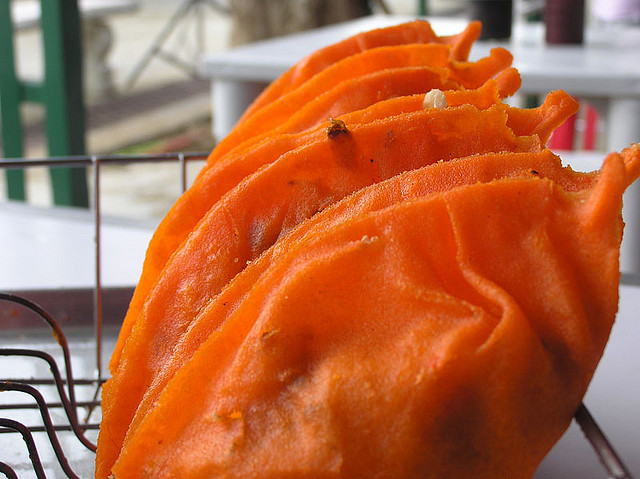 |
| Photo credit: inorte.org |
"Ilocandia is the perfect beginning to an awesome Philippine adventure."
- It's More Fun in the Philippines
 |
| Photo credit: www.tourism.gov.ph |
Video credit: http://www.youtube.com/watch?v=XwXZ1ARHNdU
 |
| Photo credit: thetravelteller.com |
Amazing culture, astonishing architectures, world-class natural sceneries, great people and good ambiance...
name it, Ilocandia got it! It is indeed a great plan to have fun in the
Philippines with Ilocos Norte as your first mark in your destination
list.
 |
| Photo credit: inorte.org |
When you start your Ilocos Norte adventure, you're most likely to start
in Laoag. It's the capital of Ilocos Norte and the hub of every
Ilocano. In other words, it's a 1st class city in the province of Ilocos
Norte.
Where's Laoag?
 |
| Photo credit: www.islandsproperties.com |
The City of
Laoag is found at the west central portion of the Province of Ilocos
Norte surrounding the South China Sea. It is sorrounded on the east by
the Municipality of Sarrat; in the Southeast by the Municipality of San
Nicolas; in the Southwest by the Municipality of Paoay; in the Northeast
by the Municipality of Vintar; in the Northwest by the Municipality of
Bacarra; and in the West by the South China Sea. It is one of the cities
in Region I.
It is found between 120 degrees and 31 minutes to 120 degrees and 40
minutes longitude and between 18 degrees and 16 minutes north latitude.
The City of Laoag is parallel with the Manila North Road and is 78 kilometers
from Vigan, Ilocos Sur, 217 kilometers from the City of San Fernando, La
Union, the Regional Capital; 274 kilometers from the Summer Capital,
Baguio City; 363 kilometers from Tarlac; and 488 kilometers from the
National Capital Region, Metro Manila.
Laoag City is strategically found at the northern tip of the
Northwestern Luzon Growth Quadrangle. It is within two hours of jet
travel to any one of Asia's economic tigers by way of the Laoag
International Airport if direct routes are opened and established.
Specifically, Laoag is eight hours by land travel and one hour and
forty-five minutes by air to Manila, forty-five minutes by air to
Taiwan, one hour and forty-five minutes to Japan and two hours to
Mainland China or Hong Kong.
 |
| Ermita Hill by www.facebook.com |
At the entrance of the Spaniards in the Philippine Islands, they found out that the natives were divided into community groups, each living its own independent government. That there were centers of population as was observed by Captain Juan de Salcedo, Ilocos was extra ordinary in size. In Laoag alone, the population went as high as 6,000. This was the greatest number of inhabitants in a "barangay" or "puroc" in the whole country at the advent of the Spaniards. The houses of the natives, made of bamboo and cogon numbered to no less than a thousand. These were built and compactly arranged around a hill known
 |
| Padsan River by www.zamboanga.com |
The late Don Luis Montilla, who for several years, was Director of
the National Library (now the Rizal Centennial Commission)
unquestionable documents in the National Archives which mention 1580 as
the real date of the organization of Laoag as a parish under the
Patronage of St. William, the Hermit, whose feast is celebrated on the
10th of February of every year.
 |
| Juan de Salcedo by xiaochua.net |
The second wave arrived after the Christian Era, beginning about the
first century A.D. and continuing through the succeeding centuries until
the 13th century. These migratory waves saw the advent of the alphabet
using Malays - ancestors of the present Ilocanos, Tagalogs, Visayans,
Bicols, Pampangos, and other Christian Filipinos. To these better
civilized Malays belonged the Ilocanos that Salcedo found in the Ilocos
in 1572.
The Spaniards found the inhabitants of Ilocos with distinctive
peculiarities in character and culture. They looked very similar to the
Tagalogs with faded hair, big eyes, olive-like color, flat nose and with
very thin beard or none at all. However, they spoke a different dialect
that, although belonging to a common tongue as the Tagalogs, had
required certain modifications and idiosyncracies making the Ilocano
dialect quite different from the Tagalog.
Though Laoag was transformed into a city in 1965 through a plebiscite,
leaving its municipal status, it remained the capital of Ilocos Norte.
The first city mayor was Hon. Eulalio F. Siazon.
 |
| Photo credit: www.zamboanga.com |
Why "Laoag"?
The name of the city "LAOAG" is a origin of the Ilocano term
"lawag", which means light/brightness. According to history, Laoag has a
clear, blue skyline. It was from this evidence, perhaps, that the place
was given the name "Laoag."
Historical records show that Laoag was organized as a town in 1585,
becoming the first parish and first town in the northern portion of the
old Ilocos - Ilocos Norte, Ilocos Sur and La Union.Laoag became a city in January 1966 by virtue of Republic Act No. 4584. It has remained the capital city of Ilocos Norte up to the now.
Treasure Hunt: Glittering Jewels of Laoag City
Laoag
City is known to have a matchless destination offering fascinating
surprises, panoramic sand dunes, verdant vegetation, attractive beaches,
highland lures, historical and heritage sites. And to prove the
accolade, here are some picturesque that will surely amaze you with its
hidden treasures.
Juan Luna is a famous artist and political activist in the 19th century.
He is the creator of the infamous Spoliarium. - See more at:
http://www.e-philippines.com.ph/philippine-tourist-destinations/ilocos-travel-and-tour-packages/where-to-go-laoag-tourist-spots/#sthash.kRm6NiD0.dpuf
Juan Luna Shrine
.JPG)
.JPG)
.JPG)




















